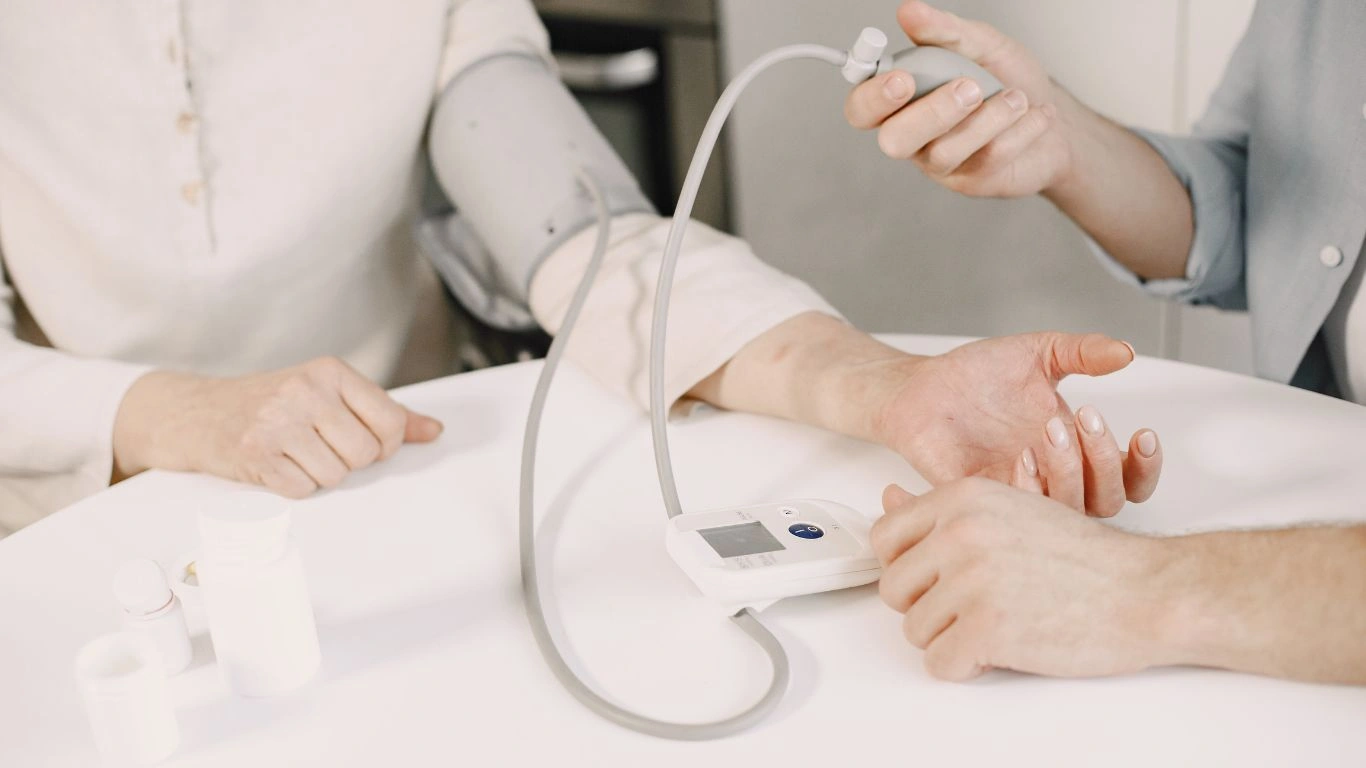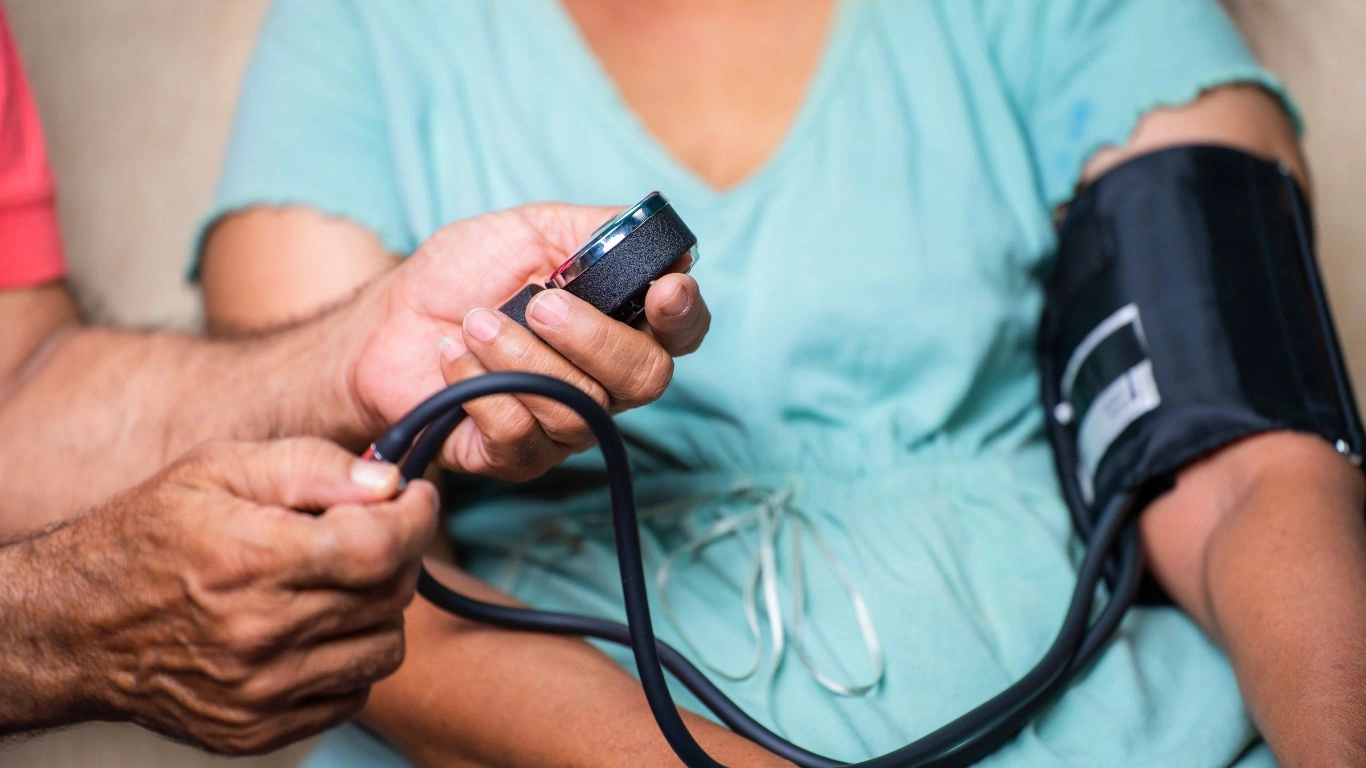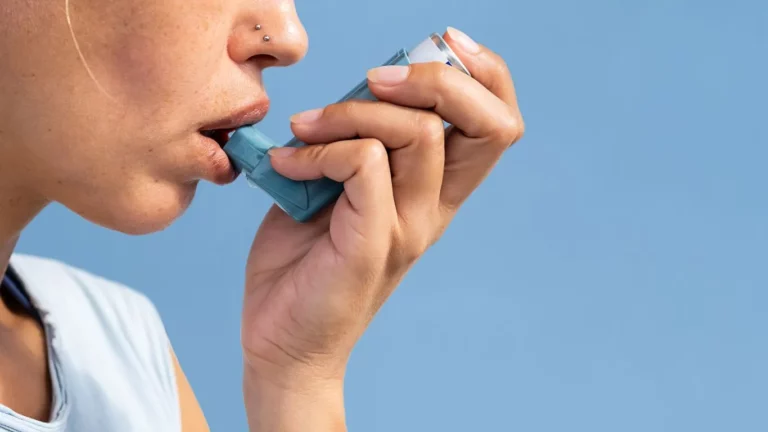How to Reduce Blood Pressure with Lifestyle Changes: Powerful Tips for You
Managing blood pressure is a critical aspect of maintaining overall health, and the good news is that there are several ways to reduce blood pressure naturally, especially through lifestyle changes. As an Internal Medicine Physician specializing in Hypertension Management, I often guide my patients through strategies that don’t require medication but can be incredibly effective in managing hypertension. If you’re looking to learn how to reduce blood pressure with lifestyle changes, you’ve come to the right place. I’ll share some tried-and-true tips, backed by science and personal experience, that can make a real difference in your health.
The Role of Lifestyle Changes in Blood Pressure Management

When it comes to controlling blood pressure, we often think about medication as the first line of defense. While medications play a vital role in treatment, lifestyle changes are just as, if not more, important. The great thing about making changes to your daily habits is that they not only help reduce blood pressure but also improve overall health, often without the side effects that come with medications.
In my practice, I’ve seen countless patients benefit from making adjustments in their daily routines. From exercise to diet to stress management, the power of these lifestyle shifts can’t be underestimated. Let’s explore some of the most effective ways to reduce blood pressure naturally.
1. Embrace Physical Activity

One of the most powerful ways to reduce blood pressure is through regular physical activity. It’s not just about hitting the gym or running marathons—simple activities like walking, biking, or even yoga can have a profound effect on lowering your blood pressure. The key here is consistency. You don’t need to become an athlete overnight, but you should aim for at least 30 minutes of moderate-intensity exercise most days of the week.
Personally, I’ve noticed that many of my patients start seeing improvements after just a few weeks of regular walking or swimming. Even small changes, like taking the stairs instead of the elevator or walking around the block during lunch breaks, can make a significant impact over time. Regular physical activity strengthens the heart, allowing it to pump blood more efficiently and reduce the force on your arteries, which directly leads to lower blood pressure.
2. Watch Your Diet: Eating the Right Foods

Your diet plays a major role in blood pressure management. If you’re wondering how to reduce blood pressure with lifestyle changes, start by taking a closer look at what’s on your plate. The DASH (Dietary Approaches to Stop Hypertension) diet is one of the most recommended dietary patterns for lowering blood pressure. It focuses on foods that are rich in potassium, magnesium, and fiber, such as:
- Leafy greens (spinach, kale)
- Whole grains (brown rice, quinoa)
- Fruits (bananas, oranges, berries)
- Legumes (beans, lentils)
- Low-fat dairy products
These foods can help reduce sodium levels and improve the health of your blood vessels, which in turn helps lower your blood pressure. It’s also important to reduce or eliminate processed foods, which are often high in sodium and unhealthy fats. I’ve seen firsthand how adjusting diet can lead to significant improvements in my patients’ blood pressure levels.
3. Reduce Sodium Intake
Reducing sodium intake is one of the most effective lifestyle changes for lowering blood pressure. The American Heart Association recommends limiting sodium to less than 2,300 milligrams per day, ideally aiming for around 1,500 milligrams per day for most adults. Too much salt causes the body to retain water, which increases blood volume and raises blood pressure. Over time, this can contribute to hypertension and other cardiovascular issues.
As someone who works with hypertensive patients regularly, I often advise reducing processed and packaged foods, as they tend to have hidden sources of sodium. Instead, opt for fresh, whole foods and flavor them with herbs and spices rather than salt. When you reduce your sodium intake, you’ll likely notice a gradual decline in your blood pressure.
4. Maintain a Healthy Weight
There’s a direct link between body weight and blood pressure. Carrying extra weight puts added strain on your heart and blood vessels, making it harder for your body to pump blood efficiently. When people lose even a small amount of weight, they often experience a noticeable drop in blood pressure. In fact, losing just 5-10% of your body weight can make a significant difference in controlling hypertension.
In my experience, patients who focus on gradual, sustainable weight loss, through a combination of diet and exercise, tend to have the most lasting results. It’s not about drastic measures or fad diets; it’s about making long-term changes that support a healthier lifestyle. If you’re not sure where to start, aiming for a balanced diet and incorporating regular physical activity is a great way to get on track.
5. Manage Stress Effectively
Stress is another major factor that contributes to high blood pressure. When you’re stressed, your body releases hormones like adrenaline and cortisol that temporarily increase blood pressure. If this happens frequently, over time, it can contribute to chronic hypertension. Stress management is an often overlooked, yet critical, component in controlling blood pressure.
Simple practices like meditation, deep breathing, mindfulness, and spending time in nature can help lower stress levels. Personally, I’ve found that just a few minutes of deep breathing or a short walk during a busy day can work wonders in lowering both physical and mental tension. Additionally, making time for hobbies and ensuring you have a good work-life balance can be extremely beneficial for long-term stress management.
6. Get Enough Sleep
Quality sleep is essential for managing blood pressure. Poor sleep or insufficient rest has been linked to an increased risk of developing high blood pressure. When you don’t sleep well, your body’s stress response is activated, and this can lead to higher blood pressure levels.
Sleep hygiene—things like going to bed at the same time each night, creating a calm sleep environment, and avoiding screen time before bed—can help you improve the quality of your rest. I encourage my patients to aim for 7-9 hours of sleep each night. Even just making small adjustments to your sleep routine can significantly impact your blood pressure.
7. Limit Alcohol Consumption

Alcohol can have both short-term and long-term effects on blood pressure. While having a glass of wine or a beer on occasion might not be a problem, excessive drinking is a different story. Regular heavy drinking can lead to higher blood pressure levels, and over time, it can contribute to the development of hypertension.
In my experience, many patients don’t realize the impact alcohol can have on their blood pressure until they start tracking their consumption. It’s important to note that moderation is key. The American Heart Association recommends no more than one drink per day for women and two for men. A standard drink is defined as:
- 5 ounces of wine
- 12 ounces of beer
- 1.5 ounces of distilled spirits
By cutting back on alcohol, you’ll likely notice improvements in both your blood pressure and overall health. It’s not about completely eliminating alcohol, but making conscious, healthier choices when it comes to drinking.
8. Quit Smoking

If you smoke, quitting is one of the most beneficial things you can do for your blood pressure. Nicotine causes a temporary spike in blood pressure and heart rate, and long-term smoking damages your blood vessels, making them less flexible. This increased strain on the cardiovascular system can lead to chronic hypertension.
As someone who has worked closely with patients dealing with hypertension, I can tell you that quitting smoking has an almost immediate impact on blood pressure. Within just a few weeks of quitting, most people experience a noticeable drop in both their blood pressure and heart rate. While quitting smoking is undoubtedly challenging, it’s one of the most powerful lifestyle changes you can make to protect your heart and blood vessels.
If you’re struggling to quit, don’t be discouraged. There are plenty of resources available, from nicotine replacement therapy to support groups, that can help you along the way. In the long run, your heart will thank you for it!
9. Stay Hydrated

Hydration is another often-overlooked factor when it comes to managing blood pressure. Proper hydration helps maintain the volume of blood circulating through your body, which is crucial for overall cardiovascular health. When you’re dehydrated, your blood volume drops, which can cause your blood pressure to rise as your body works harder to compensate.
I’ve seen patients with chronic hypertension who improved their blood pressure levels simply by drinking more water throughout the day. The general guideline is to aim for about 8 cups (64 ounces) of water daily, though some people may need more depending on their activity level, climate, and individual needs. If you’re unsure how much you should be drinking, starting with the basic 8 cups is a good rule of thumb.
In addition to water, certain herbal teas—such as hibiscus tea—have been shown to have a mild blood pressure-lowering effect. It’s a simple addition to your daily routine that can benefit your blood pressure over time. Just make sure to avoid sugary drinks or those high in caffeine, as they can contribute to higher blood pressure.
10. Incorporate Relaxation Techniques
In today’s fast-paced world, stress has become a common part of daily life. However, chronic stress can take a toll on your heart health and blood pressure. That’s why incorporating relaxation techniques into your daily routine can help manage blood pressure effectively.
Stress triggers the release of hormones like cortisol and adrenaline, which can increase your blood pressure. But when you practice relaxation techniques such as deep breathing, meditation, or progressive muscle relaxation, you help counteract these stress responses and lower your blood pressure naturally.
In my own experience, even something as simple as taking 10 minutes a day to practice mindfulness can have a profound impact on how I feel. I always encourage my patients to set aside time each day to practice relaxation methods—whether it’s meditation, yoga, or simply sitting quietly and focusing on their breathing. You’ll be amazed at how much these small moments of calm can improve your blood pressure and overall well-being.
11. Stay Consistent with Your Habits
The key to successfully lowering and managing blood pressure through lifestyle changes is consistency. Sure, we all want quick results, but the reality is that sustainable change takes time and dedication. Making small changes to your daily routine and sticking with them over the long term will yield the best results for your blood pressure.
In my practice, I always remind my patients that consistency is more important than perfection. It’s not about following every tip to the letter, but rather making gradual improvements that you can maintain. Don’t be hard on yourself if you slip up occasionally—what matters is getting back on track and continuing to make positive changes.
Tracking your progress can also be a great way to stay motivated. Whether it’s recording your daily steps, meals, or relaxation practices, keeping a log helps you stay accountable and see how far you’ve come. The small victories along the way will add up, leading to better health and a significant reduction in your blood pressure.
12. Consider Natural Supplements
While lifestyle changes should always be the foundation of your approach to managing blood pressure, some people find that natural supplements can provide an additional boost. For example, supplements like magnesium, potassium, omega-3 fatty acids, and CoQ10 have all been shown to support heart health and may help lower blood pressure.
However, I always recommend consulting with a healthcare provider before starting any new supplement regimen. Everyone’s body is different, and what works for one person may not work for another. A healthcare provider can help guide you on safe and effective options for your unique health needs.
Remember, there is no one-size-fits-all solution to managing blood pressure. The best approach is a combination of healthy lifestyle habits tailored to your individual needs and preferences.
13. Monitor Your Blood Pressure Regularly

Regular monitoring of your blood pressure is crucial when it comes to managing hypertension. Keeping track of your readings helps you stay informed about your progress and allows you to make adjustments to your lifestyle when necessary. Many of my patients find it empowering to have control over their health by monitoring their blood pressure at home.
Home blood pressure monitors are easy to use and can give you a quick snapshot of your blood pressure throughout the day. I recommend taking readings at different times, like in the morning and before bed, to get a more comprehensive understanding of your blood pressure patterns. This will also help you identify if any specific lifestyle changes are making a positive impact or if additional interventions are needed.
If you’re unsure how to properly use a home blood pressure monitor, don’t hesitate to ask your healthcare provider. They can guide you in selecting the right device and ensure you’re taking accurate measurements.
14. Stay Positive and Be Patient

Managing blood pressure with lifestyle changes is a marathon, not a sprint. While it’s easy to become frustrated if you don’t see immediate results, it’s important to stay positive and patient throughout the process. In my experience, patients who maintain a positive attitude and keep at it, even when results aren’t instant, are the ones who succeed in the long term.
Blood pressure management is about making lasting changes to your daily routine, and that takes time. Some habits—like improving diet or losing weight—may take weeks or even months to show significant results. However, these gradual changes will have long-term benefits for your health.
As a physician, I often encourage my patients to focus on the process rather than obsessing over numbers. Celebrate the small victories: perhaps your daily steps are increasing, or you’ve cut back on processed foods. Every positive change counts and contributes to better health in the future. Stay consistent, and the results will follow.
15. The Importance of a Support System
One of the most valuable tools in managing blood pressure is having a strong support system. Whether it’s family, friends, or a healthcare professional, having people who encourage and support you in your journey can make a world of difference.
In my practice, I’ve found that patients who have a support system tend to be more successful in making and maintaining lifestyle changes. Sometimes, it’s just a matter of having someone to talk to when you’re feeling stressed or to help you stay accountable to your health goals. A supportive friend or family member can even join you in your exercise routines or help prepare healthy meals.
If you’re struggling to find support, consider joining a group or online community focused on hypertension management. Many people find that connecting with others who share similar challenges can be both motivating and reassuring.
16. Take Control of Your Mental Health
Mental health and physical health are deeply interconnected. Chronic stress, anxiety, and depression can contribute to high blood pressure. By taking steps to improve your mental well-being, you’re not only helping your mind but also giving your heart and blood vessels a break.
Some of the strategies I recommend to my patients include practicing mindfulness, seeking therapy, and engaging in activities that bring joy and relaxation. In my experience, patients who take a holistic approach—addressing both their mental and physical health—tend to experience the most profound changes in their blood pressure.
Additionally, focusing on improving your mental health can also help with other lifestyle changes. For example, managing stress effectively may make it easier to stick to a healthier diet or get more sleep. When your mind is in a good place, it’s much easier to make healthy choices for your body.
17. Consulting with a Healthcare Provider
While lifestyle changes are powerful tools for managing high blood pressure, it’s essential to work alongside a healthcare provider. Your doctor can help you monitor your blood pressure, offer personalized advice, and track your progress. They are also key in making sure that any changes you’re making are safe and appropriate for your overall health status.
As an Internal Medicine Physician, I always encourage my patients to be proactive about their health and communicate openly with their doctors. Your healthcare provider will not only help you tailor a blood pressure-lowering plan but also ensure that any underlying conditions or medications are properly managed.
It’s important to remember that while these lifestyle changes can be incredibly effective, they should complement—rather than replace—any medical treatments your provider may recommend. Together, these approaches will give you the best chance of achieving and maintaining healthy blood pressure levels.
References
For further reading and resources, I encourage you to check out the following reputable organizations that provide valuable information on hypertension and blood pressure management:
- American Heart Association
- Centers for Disease Control and Prevention (CDC) – Blood Pressure
- National Heart, Lung, and Blood Institute (NHLBI)
Disclaimer
While this article provides useful information on managing blood pressure through lifestyle changes, it is not intended as a substitute for professional medical advice. Always consult with your healthcare provider before making any significant changes to your diet, exercise routine, or medication regimen. Blood pressure management is a personal journey, and your doctor can help tailor the best plan for your specific needs.

Dr. Gwenna Aazee is a board-certified Internal Medicine Physician with a special focus on hypertension management, chronic disease prevention, and patient education. With years of experience in both clinical practice and medical writing, she’s passionate about turning evidence-based medicine into accessible, actionable advice. Through her work at Healthusias.com, Dr. Aazee empowers readers to take charge of their health with confidence and clarity. Off the clock, she enjoys deep dives into nutrition research, long walks with her rescue pup, and simplifying medical jargon one article at a time.






